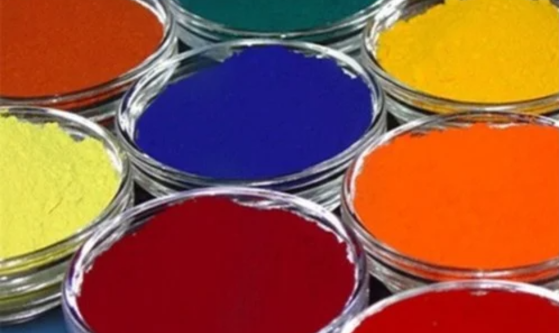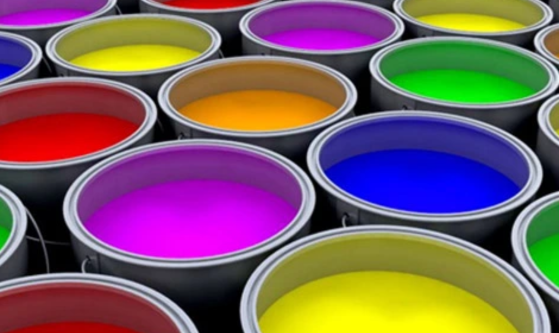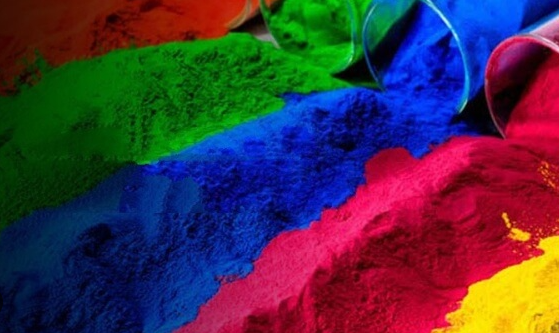Dyes come in many types, each formulated for specific materials, applications, and effects. Here’s a comprehensive list of commonly used types of dyes:

Disperse Dyes

Pigment Dyes
Acid Dyes
Properties: Water-soluble and have a strong affinity for protein fibers.Applications: Primarily used for dyeing wool, silk, nylon, and sometimes leather.Features: Offers bright colors with good colorfastness. Basic (Cationic) Dyes
Properties: Positively charged, soluble in water.Applications: Effective on acrylics and some modified nylons.Features: Produces vibrant colors, though with variable light and wash fastness.Direct Dyes
Properties: Water-soluble, can be applied directly without a mordant.Applications: Commonly used on cellulosic fibers like cotton, rayon, and linen.Features: Easy to apply but may need salt to enhance uptake and fixing.Reactive Dyes
Properties: Chemically react with fibers to form covalent bonds.Applications: Popular for cellulose fibers such as cotton, linen, and also suitable for silk and wool.Features: High colorfastness to washing and light, extensive color range.
Reactive Dyes
Vat Dyes
Properties: Insoluble in water; require reduction to a soluble form for application.Applications: Widely used for dyeing cotton, especially for indigo denim.Features: Excellent colorfastness to light, washing, and rubbing.Disperse Dyes
Properties: Finely ground, non-ionic particles that disperse in water.Applications: Developed for hydrophobic synthetic fibers like polyester, acetate, and nylon.Features: Good wash and light fastness, can achieve vibrant shadesSulfur Dyes
Properties: Cheap, water-insoluble dyes applied using alkaline sulfide solutions.Applications: Primarily used for cellulosic fibers, particularly cotton.Features: Economical, good wash fastness but limited in bright shades.Mordant Dyes
Properties: Require a mordant (metal salt) to bond with fibers.Applications: Traditionally used for wool, silk, and cotton.Features: Good fastness properties; variety of colors can be achieved with different mordants.Azoic (Naphthol) Dyes
Properties: Produced by the coupling of a naphthol compound with a diazo compound on the fabric.Applications: Commonly used for cellulosic fibers.Features: Bright colors with excellent wash and light fastness.Pigment Dyes
Properties: Insoluble in water and do not actually bond with fibers.Applications: Used for dyeing textiles, plastics, and printing on fabrics.Features: Excellent colorfastness; require a binder to adhere to the material.Metal Complex Dyes
Properties: Complexes of metal ions with dye molecules.Applications: Effective on wool, silk, and nylon.Features: Good light and wash fastness; produces shades that are typically less bright but very stable.Natural Dyes
Properties: Derived from plants, animals, or minerals.Applications: Used on various fibers, especially in sustainable and eco-friendly textile applications.Features: Offers earthy colors with variable fastness properties, depending on the type.Food Dyes
Properties: Edible dyes safe for consumption.Applications: Used in food, beverages, and sometimes cosmetics.Features: Must be non-toxic and adhere to safety regulations; available in both natural and synthetic forms.Optical Brightening Agents (OBAs)
Properties: Fluorescent dyes that absorb UV light and emit it as visible blue light.Applications: Used in detergents, paper, and textiles to enhance whiteness.Features: Not a true dye; adds brightness rather than color.
Each type of dye serves specific purposes and can vary greatly in terms of colorfastness, application process, and the end material compatibility. Let me know if you’d like more details on any specific dye type!



